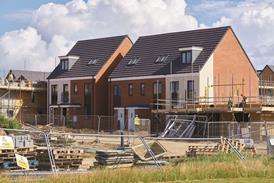It may seem far away, but restructuring our economy to meet net zero by 2050 is a huge undertaking. Despite the challenge, some impressive policy to achieve the government’s legal target is coming forward.

In the property sector, the UK government has not developed a nationwide net zero strategy with firm commitments. Instead, local authorities are acting to redevelop planning rules and design new environmental frameworks. The change being brought about, while in its infancy, is exciting but developers should be alive to what’s changing, and what more is coming.
The Greater London Authority has already adopted embodied carbon limits for new homes and buildings, for example, and Bristol City Council is consulting on similar plans.
Bath and North East Somerset Council (B&NES) has gone one step further, creating a bespoke energy-based net zero housing policy. But while B&NES is the only English council to have currently approved an energy-based net zero housing approach, developers should be gearing up to see similar rules being adopted across the country.
What does the policy include?
Set out on the council’s website, B&NES’s new approach will ensure the energy use of any proposed scheme is measured and meets a specified target – setting a limit on the total energy use and demand for space heating. It will also require sufficient onsite renewable energy generation to match the total energy consumption of the buildings – ensuring the development is 100% self-sufficient.
New policies will also address building emissions, including limiting carbon emissions resulting from the materials used in the construction of large-scale developments. These embodied carbon emissions will be limited to 900kg carbon dioxide equivalent per square metre. The council will also impose net zero operational carbon standards for new, major non-residential development.
The ambition needed
The new policy is ambitious and presents challenging targets. For instance, a space heating demand of less than 30kWh/sq m per year, total energy use of less than 40kWh/sq m per year and onsite renewable energy generation to match total energy use.
It is important that developers have the right team of experts in place to design projects
There is no doubt these kinds of targets are ambitious, but the good news for developers is that meeting them does not require a fundamental rethink of how we build or design housing. Many of the required technologies and practices already exist in the industry; it is now about increasing the scale and ambition of what has become standard practice for many new-build properties.
For instance, most developers will be familiar with applying the energy hierarchy: reducing energy consumption through a carefully designed facade, ensuring all houses are connected to low-carbon heat sources and providing photovoltaic panel coverage. To meet the new B&NES energy targets will require maximising them all together. Many housebuilders will not be used to implementing the most ambitious versions of all these measures in combination, but if this is done then new targets will become achievable.
The challenge instead becomes how to deliver these strategies within the allocated budget, which is where seeking design advice from engineers at concept stage will be critical. Early-stage design strategies such as balanced facade window-wall ratios and appropriate equipment space allocation can help to avoid paying premiums on specialist products to fix issues further down the line.
Embodied carbon targets
B&NES has also set a limit of 900kg carbon dioxide equivalent per square metre for embodied carbon at large residential and commercial schemes. It is another ambitious ask that forms part of the local authority’s wider carbon reduction in construction policy – again, however, it is realistic for developers to meet if they work together with their design team and contractors.
With these new requirements in place, it is more important than ever that developers have the right team of experts in place to design projects. These experts are essential to ensuring designs submitted for planning do not inadvertently ‘lock in’ high embodied carbon design decisions.
It is also important that developers now look to open a dialogue with councils as soon as possible, to ensure targets are met and, critically, calculations are accurate and transparent.
As other councils begin to adopt requirements, what is needed may vary. Checking with each council will be key to avoiding miscommunication and delays to projects.
Lesson for developers
Developers working outside B&NES may think these new rules do not affect them, but many now look set to become the industry standard. Similar housing policies are already being proposed in Cornwall and Bristol.
In addition, the Environmental Audit Committee has recommended that all local authorities adopt embodied carbon limits by 2025. Many of the rules coming forward in B&NES may soon be applicable to local authorities across the country.
Ultimately, developing an understanding of these new requirements, and how they might differ between authorities, will soon be critical for developers and consultant teams across the country.































No comments yet